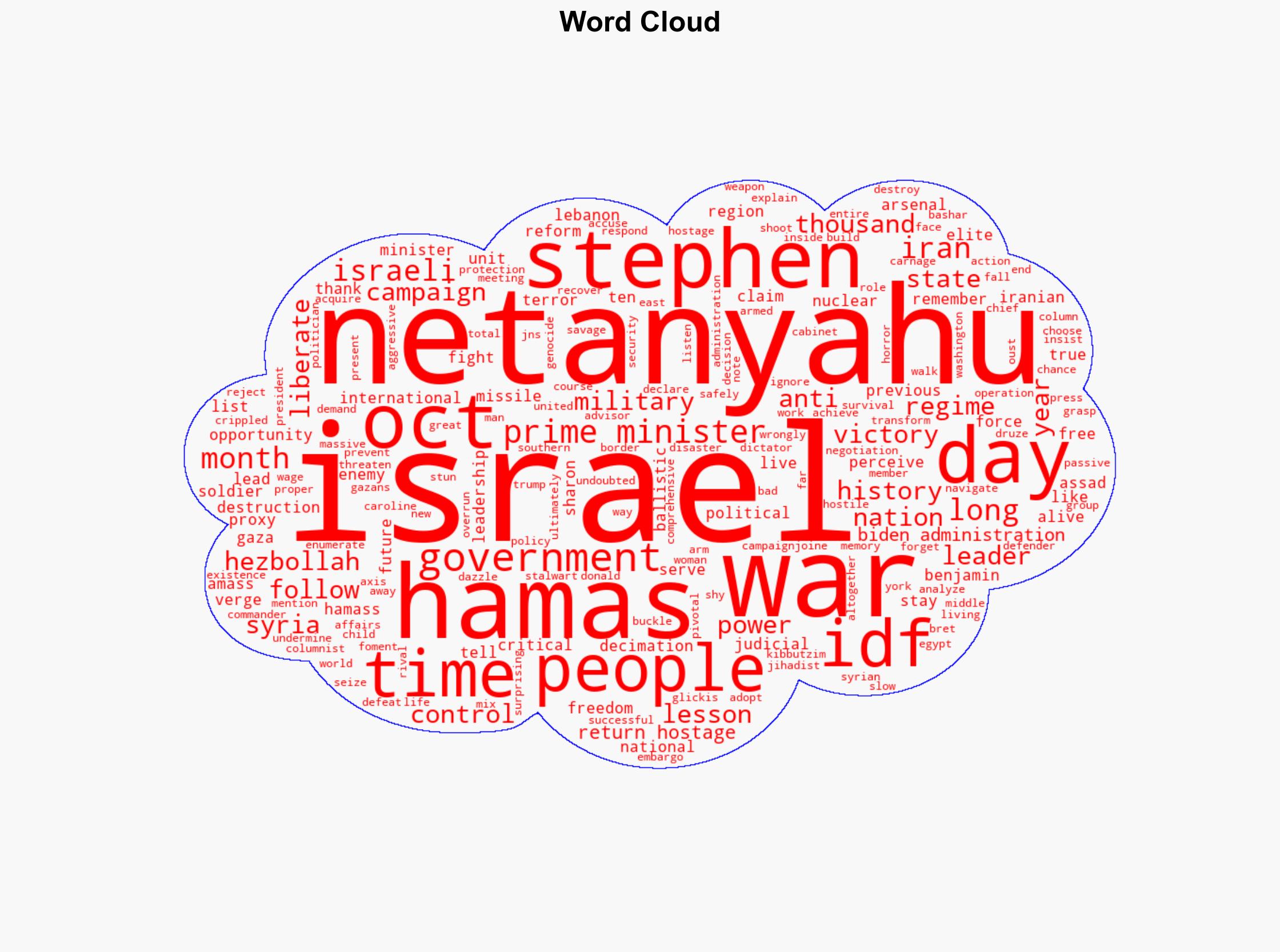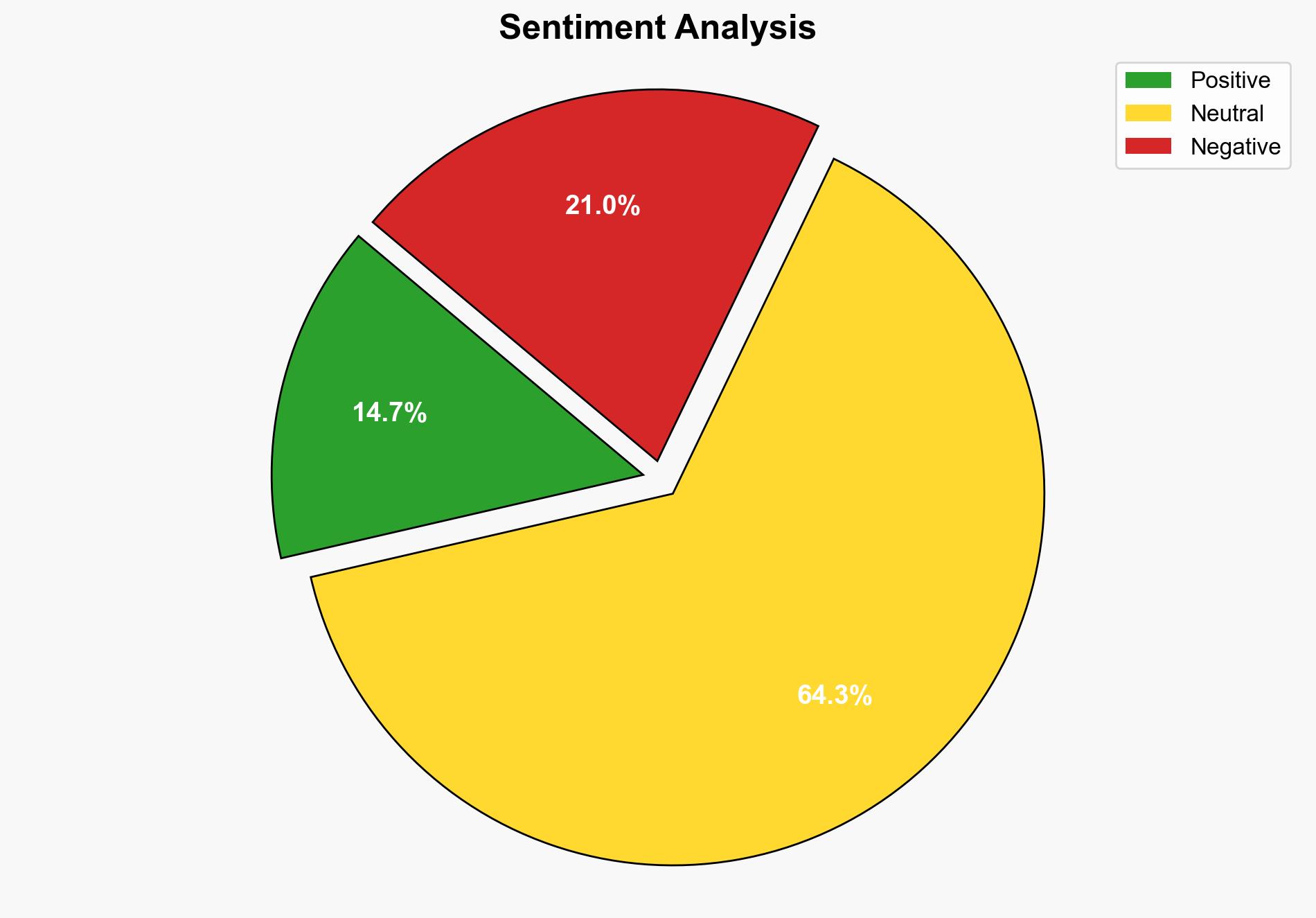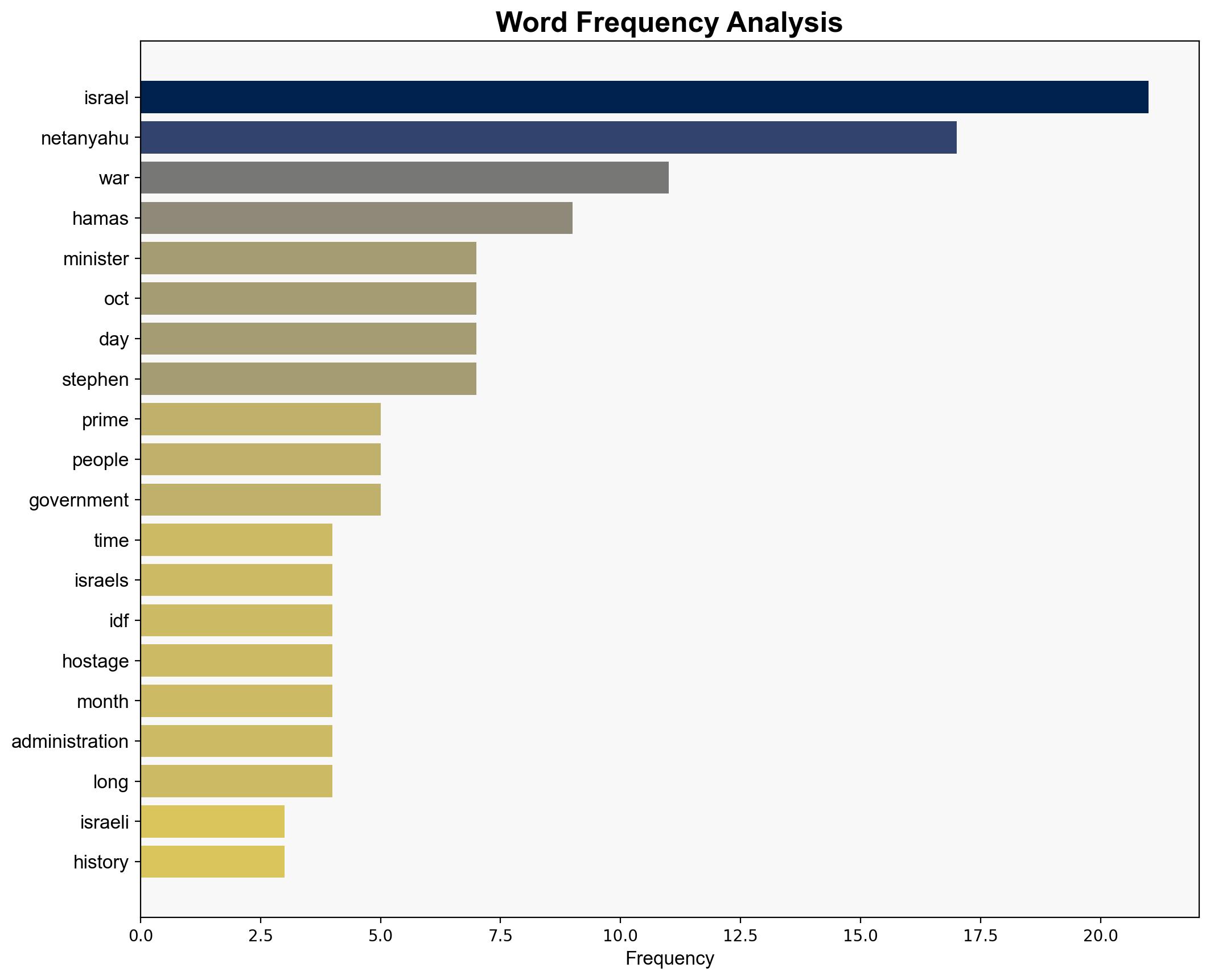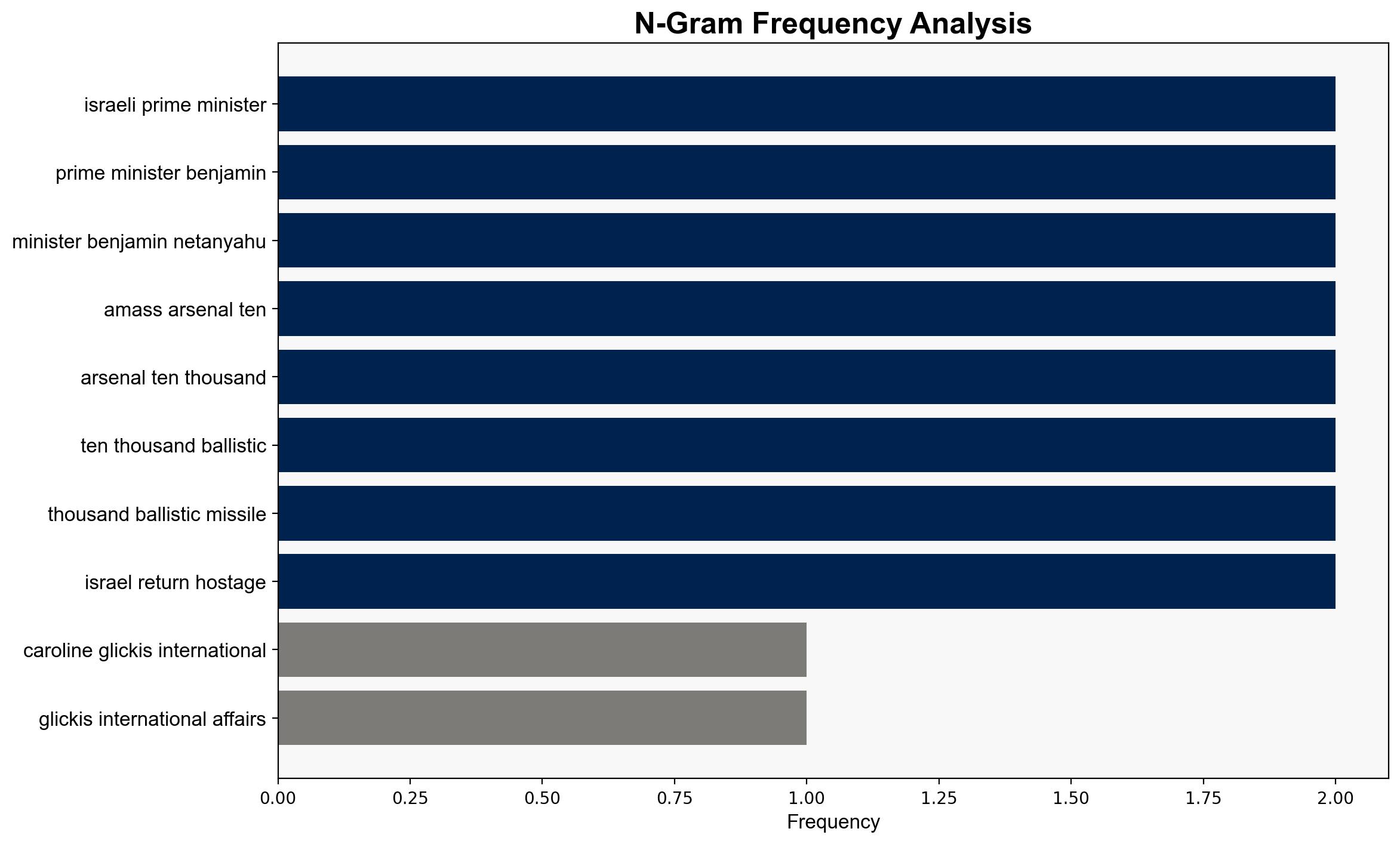What have we learned from this war – Israelnationalnews.com
Published on: 2025-10-09
Intelligence Report: What have we learned from this war – Israelnationalnews.com
1. BLUF (Bottom Line Up Front)
The analysis of the situation suggests two primary hypotheses: one, Israel’s military actions have strategically weakened regional threats and improved its security posture; two, the ongoing conflict and political dynamics have not significantly altered the strategic balance, leaving Israel vulnerable to future threats. The first hypothesis is better supported by the evidence, particularly the reported decimation of Hezbollah and the potential weakening of Iranian proxies. Confidence level: Moderate. Recommended action: Continue diplomatic and military strategies to capitalize on current gains while preparing for potential resurgence of threats.
2. Competing Hypotheses
1. **Hypothesis A:** Israel’s military operations have significantly weakened regional threats, notably Hezbollah and Iranian proxies, thereby enhancing national security.
– Supported by reports of Hezbollah’s decimation and the potential fall of Bashar Assad’s regime.
– Suggests a strategic victory for Israel, with opportunities for regional stabilization.
2. **Hypothesis B:** Despite military efforts, the strategic balance in the region remains largely unchanged, with persistent threats from Iran and its proxies.
– Supported by ongoing concerns about Iran’s nuclear ambitions and missile arsenal.
– Indicates a need for continued vigilance and strategic planning.
3. Key Assumptions and Red Flags
– **Assumptions:** Hypothesis A assumes that military victories translate to long-term strategic advantages. Hypothesis B assumes that regional dynamics are resistant to change despite military interventions.
– **Red Flags:** Potential bias in reporting, particularly in attributing successes solely to Israeli actions. Lack of independent verification of Hezbollah’s decimation and Assad’s weakening.
– **Blind Spots:** The role of international actors, such as the United States and other regional powers, in influencing outcomes is not fully explored.
4. Implications and Strategic Risks
– **Implications:** A weakened Hezbollah and Iranian influence could lead to a power vacuum, potentially destabilizing the region further.
– **Strategic Risks:** Escalation of conflict if Iran accelerates its nuclear program or if Hezbollah regroups. Potential for increased cyber threats as a form of asymmetric warfare.
– **Cascading Threats:** Economic instability in the region could lead to increased migration pressures and humanitarian crises.
5. Recommendations and Outlook
- Enhance intelligence-sharing with allies to monitor and counteract potential resurgence of threats.
- Strengthen cyber defenses to mitigate asymmetric threats.
- Scenario Projections:
- Best Case: Continued weakening of Iranian proxies leads to regional stabilization.
- Worst Case: Iran successfully develops nuclear capabilities, escalating regional tensions.
- Most Likely: Ongoing skirmishes with periodic escalations, requiring sustained military readiness.
6. Key Individuals and Entities
– Benjamin Netanyahu
– Bret Stephens
– Bashar Assad
– Donald Trump
7. Thematic Tags
national security threats, cybersecurity, counter-terrorism, regional focus




